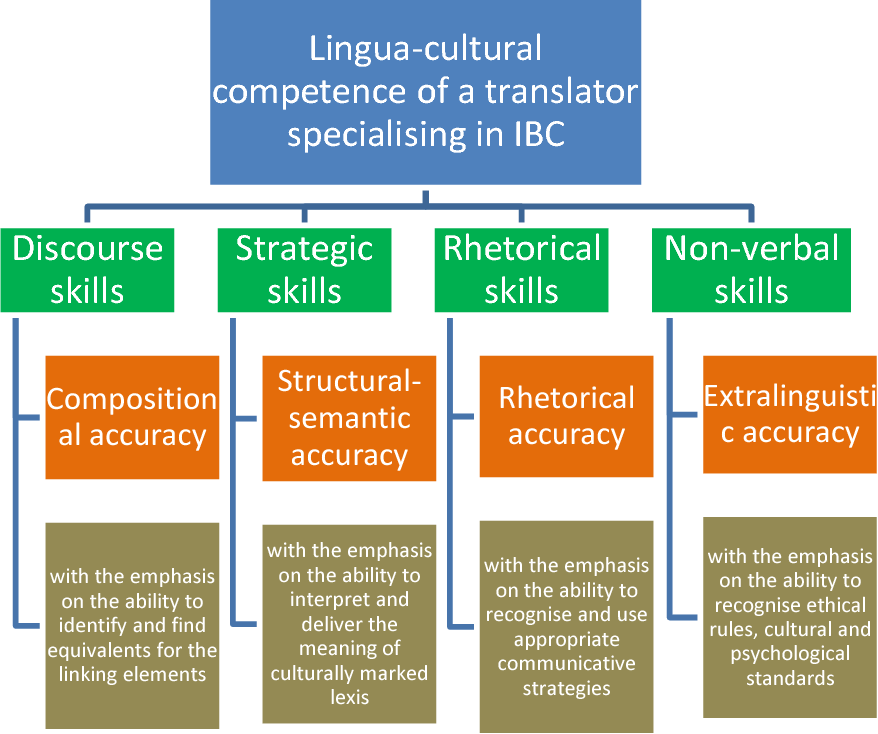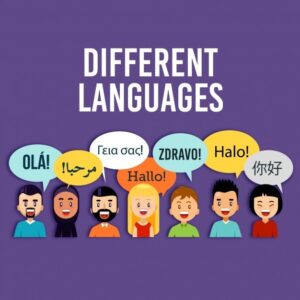Language serves as more than a mere tool for communication; it fundamentally shapes our cognition, influences our perception of the world, and governs our interactions with others through various linguistic structures and semiotic systems.
This exploration delves into the intricate relationship between language and culture, examining concepts such as linguistic relativity, also known as the Sapir-Whorf hypothesis, and the ways in which diverse languages affect our emotions, decision-making processes, and overall worldview.
It is essential to understand the impact of language on societal structures, intercultural communication, personal identity, and cognitive development.
This inquiry invites participants to engage with the profound connections between language, thought, and cultural identity.
What is Language?
.jpg_00.jpeg)
Language constitutes a complex system of communication that encompasses various elements, including syntax, semantics, pragmatics, and discourse. It enables individuals to convey thoughts, emotions, and cultural identities, serving as an essential tool for expressing human cognition and facilitating social interaction across diverse cultures, including those with different regional dialects.
Linguistic diversity significantly influences our understanding of the world, as different languages embody unique structures and expressions that reflect their cultural contexts and social identities. The evolution of language, from regional languages to dialects, and the emergence of pidgins and creoles, is profoundly intertwined with human behavior and societal values, highlighting its importance in everyday life.
The intricate interplay between syntax, which governs the arrangement of words, and semantics, which pertains to their meaning, forms the foundation of effective communication. These linguistic features not only facilitate the articulation of complex ideas but also enrich conversations with cultural nuances and contextual subtleties.
For instance, language usage varies considerably across different societies, reflecting their distinct histories, traditions, and cultural norms. Language adapts and evolves as cultures interact, leading to the emergence of pidgins, creoles, and hybrid forms, thereby showcasing the dynamic nature of human expression.
Ultimately, language is not merely a set of rules; it is a living entity that bridges gaps between individuals, fostering understanding and collaboration in an increasingly interconnected world, while also facilitating cultural transmission.
What is Culture?
Culture encompasses the collective beliefs, practices, and social norms that define a group of individuals, significantly influencing their worldview, identity, and cognitive frameworks. It shapes our comprehension of societal values and establishes a framework for interpreting the environment around us.
Through various forms of expression, such as art, language, and rituals, culture enhances the richness of human experience and fosters a sense of belonging among individuals within a community. The interplay between culture and language is particularly significant, as they mutually influence one another, reflecting and shaping the identities and values of societies.
At its core, cultural identity serves as a crucial component affecting how individuals perceive themselves and their roles within larger social structures, contributing to identity formation. The diversity present within cultures allows for a wide array of perspectives and practices, enriching interactions and promoting empathy among different groups.
The impact of cultural contexts on human behavior is profound, often dictating social norms that guide daily interactions and decision-making processes. By understanding these elements, one can appreciate the intricate tapestry of human experience that culture weaves, revealing the complexities of coexistence in an increasingly interconnected world shaped by diverse interpretative frameworks.
How Does Language Influence Our Thoughts?
Language fundamentally influences cognitive processes, shaping how individuals perceive and understand the world around them through various interpretative frameworks and mental frameworks. The concept of linguistic relativity, commonly associated with the Sapir-Whorf hypothesis, asserts that the structure and vocabulary of a language can affect the thought processes and cognitive frameworks of its speakers, thereby influencing their epistemology.
This relationship underscores the significant impact that language has on cognition, as it not only facilitates communication but also structures how individuals formulate ideas and interpret experiences.
An understanding of this interplay between language and thought is essential for exploring the complexities of human cognition, cognitive linguistics, and the dynamics of cross-cultural communication.
What is Linguistic Relativity?
Linguistic relativity, commonly known as the Sapir-Whorf hypothesis, is a theory that posits that the structure of a language can significantly influence the cognition, thought patterns, and worldview of its speakers. This concept suggests that different languages may engender distinct thought patterns, thereby affecting how individuals perceive and interact with their environments.
The implications of linguistic relativity extend across various disciplines, including anthropology, psychology, and cognitive linguistics, as it invites scholarly exploration into the interplay between language, thought, and cultural context, and its role in semiotics. This understanding enhances insights into cross-cultural communication and cognitive development.
By investigating how language shapes our comprehension of reality, one can recognize the substantial impact it has on our interactions, decision-making processes, and social constructs. For example, individuals who speak languages with extensive spatial descriptors may exhibit a heightened awareness of their surroundings, while those with a rich vocabulary for color may be more adept at discerning subtle differences that others might overlook.
This relationship emphasizes the significance of cultural nuances in communication, enabling individuals to navigate and interpret experiences that may seem foreign through effective use of language strategies and cross-linguistic influence. Ultimately, the relevance of this hypothesis promotes further inquiry into how language not only reflects social realities but also constructs them, thereby fostering empathy and collaboration across diverse cultural landscapes.
How Does Language Shape Our Perception of the World?
Language profoundly influences our perception of the world, affecting how individuals categorize experiences, interpret information, and engage in socialization. The manner in which language structures and conveys meaning can create context-dependent interpretations that shape our understanding of reality, inform our emotional responses, and influence our perception of time and spatial reasoning.
Through linguistic elements such as metaphors, idioms, and symbolism, language not only describes phenomena but also frames our worldview, thus impacting our social interactions and communication styles. This intricate relationship between language and perception is crucial in the field of cognitive linguistics, providing valuable insights into how individuals from diverse cultural backgrounds may perceive the same event or concept in markedly different ways.
For example, the metaphorical expressions employed to describe love can vary significantly across cultures; some languages may depict love as a journey, while others may frame it as a battle, showcasing the nuances of cultural values and emotive language. These linguistic choices not only reflect cultural perspectives but also actively shape the ways in which emotions are experienced and understood.
Likewise, idioms can encapsulate the values and beliefs inherent in a culture, often presenting challenges to effective cross-cultural communication. When individuals encounter these idiomatic expressions, they may carry not only a literal interpretation but also a broader emotional and cognitive resonance, highlighting the substantial impact language has in shaping our perceptions and experiences.
How Does Language Affect Our Emotions and Behaviors?
.jpg_01.jpeg)
Language has a profound impact on emotions and behaviors, acting as a medium for emotional expression and social interaction. The selection of words and the structure of communication can significantly influence emotional responses, shape interpersonal relationships, and reflect social identity.
By examining communication styles, one can gain valuable insights into the linguistic features that govern emotional expression and interpersonal dynamics. This relationship between language and human behavior is particularly relevant in fields such as cultural psychology and linguistic anthropology, which investigate how language affects emotional experiences, social connections, and identity markers.
Words serve not only to convey information but also to carry emotional weight, thereby shaping perceptions, reactions, and cognitive frameworks across various contexts. When individuals express their feelings, they often draw upon a rich vocabulary that reflects their emotional landscape, thereby enhancing their ability to connect with others.
Communication styles—whether assertive, passive, or empathetic—further influence interactions, emotional exchanges, and interpretative frameworks. Additionally, cultural nuances play a critical role; for example, certain phrases may evoke strong emotions or encounter resistance based on the listeners’ backgrounds.
Ultimately, understanding these connections can lead to more effective communication, foster deeper interpersonal relationships, and facilitate bilingualism and multilingualism.
Cross-Cultural Differences in Language and Thought
Cross-cultural differences in language and thought illustrate the ways in which diverse linguistic and cultural backgrounds shape our understanding and interpretation of the world, highlighting the role of language acquisition and language barriers.
These differences manifest in various forms, including language structure, idiomatic expressions, and the underlying thought processes and cognitive frameworks of different cultures. Recognizing these variations is crucial for effective cross-cultural communication, as they underscore the rich tapestry of cultural diversity that influences perceptions, behaviors, interactions, and language socialization.
By analyzing how different cultures articulate concepts such as time, space, and emotions, we gain valuable insights into the complexities of human cognition, the nuances of communication styles, and the role of non-verbal communication and gestures.
How Do Different Languages Express Emotions?
Different languages uniquely express emotions by utilizing various linguistic features and cultural contexts to convey feelings and sentiments. For example, some languages possess specific words or phrases that encapsulate complex emotional states, while others may rely on nonverbal communication and gestures to enhance emotional expression, illustrating the nuances of cultural constructs and emotive language.
These variations underscore the influence of cultural context on how emotions are articulated, which shapes interpersonal dynamics and communication styles. By examining these differences, one can gain a deeper understanding of the significance of language in shaping emotional experiences across diverse cultures, reflecting cultural values and communication styles.
For instance, in Portuguese, the term “saudade” evokes a profound emotional state of nostalgia and longing, whereas the Japanese concept of “wabi-sabi” reflects an appreciation for beauty in imperfection, illustrating distinctive perspectives on life and emotions.
Additionally, body language and gestures are integral to communication, particularly in Mediterranean cultures, where animated expressions significantly enhance emotional delivery and underscore the importance of non-verbal communication in conveying meaning and sentiment.
Understanding these linguistic nuances is essential not only for fostering personal relationships but also for facilitating cross-cultural interactions. This comprehension allows individuals to navigate complex emotional landscapes, embrace linguistic diversity, and cultivate deeper connections, even in the presence of language barriers and cultural differences.
How Do Different Languages Convey Time and Space?
Languages convey concepts of time and space in various ways, reflecting the distinct cognitive frameworks and cultural perspectives of their speakers. Some languages emphasize a linear progression of time, while others conceptualize it as cyclical, which influences how individuals perceive past, present, and future events.
Similarly, spatial dimensions are expressed through different linguistic structures, impacting social interactions and navigation within diverse cultural contexts. Understanding these linguistic variations is essential for enhancing cross-cultural communication, appreciating cognitive linguistics, and recognizing the cognitive diversity that exists among languages.
For example, in cultures where time is perceived as cyclical, individuals may prioritize recurring events, fostering a sense of continuity that contrasts sharply with cultures that regard time as a finite resource to be managed efficiently, illustrating differences in cognitive frameworks and cultural norms.
Regarding spatial expression, some languages utilize absolute directions, while others depend on relative positions, fundamentally shaping how speakers navigate and comprehend their environments, influencing their mental frameworks and spatial reasoning.
These distinctions not only influence personal and communal identity but also enhance or inhibit collaboration and empathy in intercultural exchanges. An exploration of linguistic diversity, including the study of semiotics and anthropology, can provide profound insights into how individuals interpret their world and conduct their lives.
How Do Different Languages Affect Decision Making?
Different languages can significantly influence decision-making processes, affecting cognitive biases and the choices individuals make. Research indicates that the linguistic framing of options, as explored in cognitive linguistics, can result in variations in how decisions are perceived and evaluated, ultimately impacting outcomes.
Cultural influences also play a crucial role, as the norms and values embedded within a language can shape an individual’s approach to risk and uncertainty. Understanding these effects is essential for comprehending the complexities of language’s impact on cognition, cognitive development, and behavior across diverse cultural contexts.
For instance, the concept of loss aversion may manifest differently in cultures that possess specific terminology for loss compared to those that lack such distinctions. In certain languages, the framing of success and failure may lead to increased sensitivity to negative outcomes, thereby skewing judgment and encouraging a more conservative approach to risky decisions.
Bilingual individuals often exhibit varied cognitive biases depending on the language in which a decision is made, illustrating that language not only conveys information but also influences thought processes, cognitive frameworks, and emotional responses.
This intersection of language, cognition, and cultural context highlights the profound impact that linguistic differences can have on everyday decision-making.
The Impact of Language on Society and Relationships
.jpg_10.jpeg)
The impact of language on society and interpersonal relationships is significant, as it constitutes a fundamental component of social interaction and community engagement. Language not only enables effective communication but also reflects and reinforces the social norms, cultural heritage, and cultural values prevalent within a community.
Furthermore, language has the capacity to either bridge or create communication barriers, thereby influencing the formation and maintenance of relationships. An understanding of these dynamics is essential for effectively navigating the complexities of social interactions, fostering cross-cultural understanding, and appreciating linguistic relativity in diverse contexts.
How Does Language Influence Social Hierarchies?
Language plays a critical role in shaping social hierarchies and influences the expression of power dynamics and status within a community. The manner in which individuals communicate can reflect their position within a social hierarchy, with variations in language use, tone, and style effectively signaling differences in authority and respect.
Societal values and cultural contexts shape the expectations surrounding language use, thereby affecting interpersonal relationships and group dynamics. A comprehensive understanding of these influences is essential for navigating social interactions and promoting inclusivity in communication.
For example, formal language may convey professionalism and authority, whereas colloquial speech can promote camaraderie, albeit potentially signaling lower status in a more hierarchical environment. Cultural nuances dictate the perception of assertiveness and can significantly alter the prevailing power dynamics.
In certain cultures, indirect communication is highly valued, which reinforces social harmony at the potential expense of directness, thereby shaping societal perceptions of leadership and influence.
Consequently, by analyzing communication styles within diverse cultural contexts, one can gain deeper insights into the underlying values that govern social hierarchies, facilitating a more nuanced understanding of power relations.
How Does Language Affect Intercultural Communication?
Language plays a significant role in intercultural communication, acting as both a facilitator and a barrier in cross-cultural interactions. Variations in language use, nonverbal communication, and cultural context can lead to misunderstandings or, conversely, enhance mutual understanding among individuals from diverse backgrounds. The ability to navigate these differences is essential for fostering effective communication and building relationships across cultures, as it promotes cross-cultural communication, understanding, and respect for linguistic diversity. Identifying and addressing communication barriers can greatly improve interpersonal dynamics in multicultural settings.
For example, a literal translation of idiomatic expressions may result in confusion rather than clarity, highlighting the necessity for sensitivity to the nuances of different languages and the importance of accurate translation. Additionally, tone, gestures, and body language, which can differ significantly across cultures, play a critical role in the interpretation of messages, underscoring the role of pragmatics and semantics.
Emphasizing the importance of active listening and empathy can further bridge the gap that language differences often create. Embracing cultural diversity in communication not only enriches personal interactions but also fosters a deeper appreciation for the complex tapestry of human expression worldwide.
How Does Language Shape Our Identity and Relationships?
Language serves as a fundamental element in the formation of our identity and relationships, functioning as a marker of cultural identity and group affiliation. The languages individuals speak and their modes of communication significantly influence self-perception and the perceptions held by others, thereby impacting personal connections and social interactions. This dynamic is explored within the field of linguistic anthropology, which examines language’s role in identity markers and identity formation.
Language not only fosters a sense of belonging and identity within communities but also underscores the differences arising from diverse cultural backgrounds. A comprehensive understanding of this dynamic is essential for appreciating the role of language in both personal and social relationships, as well as in cultural transmission and socialization.
As individuals navigate various societal frameworks, the nuances of language can reinforce identity, often reflecting the shared histories and values that unite people. Dialects and idiomatic expressions act as indicators of regional or cultural identities, influencing the formation and maintenance of relationships.
When individuals engage in conversations rich with cultural references, they not only transmit information but also express warmth, respect, and understanding.
Therefore, recognizing the interplay between language and identity enhances our interactions, highlighting the significance of cultural influences in shaping community dynamics and the ways in which we connect with one another.
Frequently Asked Questions
How does language influence the way we think across cultures?
.jpg_11.jpeg)
Language is a powerful tool that shapes our perceptions and thought processes. Across different cultures, language plays a crucial role in how we perceive and interpret the world around us.
Can language affect the way we perceive colors?
Language can profoundly impact perception, including how we perceive colors, emphasizing the role of linguistic relativity and semantics in shaping sensory experiences.
Yes, language can impact how we perceive colors, a phenomenon explained by linguistic relativity, often associated with the Sapir-Whorf hypothesis. For example, some languages have different words for shades of colors that English does not have, leading speakers to perceive and name colors differently, affecting their perception and cognition.
Does language influence our decision-making and thought patterns?
Absolutely. Our language shapes the way we think, influencing our cognitive processes and communication strategies, which can affect our decision-making processes. Different languages have different linguistic structures, semantics, and expressions that can lead to varying ways of thinking, shaping our worldview and interpretation of reality.
How does language shape our cultural and social identity?
Language is an essential aspect of cultural identity and social constructs. The words, expressions, idioms, and phrases used in a language reflect the values, beliefs, and traditions of a particular culture, forming a part of our social identity and cultural heritage.
What role does language play in intercultural and cross-cultural communication?
Language is a crucial aspect of intercultural communication and linguistic diversity. Misunderstandings can arise due to differences in language use, vocabulary, and cultural context, leading to misinterpretations and conflicts between individuals from different cultures. This highlights the importance of cross-cultural communication skills and the study of linguistic anthropology.
Can language influence our perceptions and categorization of gender roles?
Yes, language can impact how we perceive and categorize gender roles and expectations. Different cultures have different linguistic structures, such as grammatical gender and narrative structures, and expressions that can reflect and reinforce traditional gender norms, stereotypes, and social constructs.

My name is Bruno, I have been a writer for 5 years and I work with website creation. My goal is to provide true information to readers. In fact, on this site I write about cultures and traditions, which I have been passionate about since childhood.




